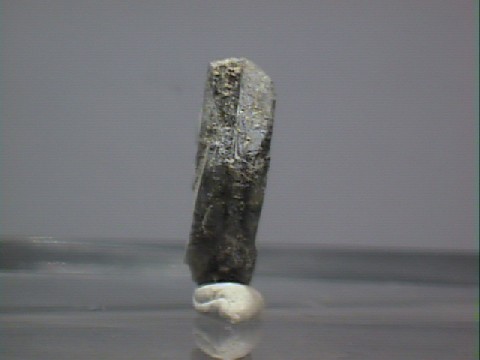 THE
MINERAL PIRSSONITE
THE
MINERAL PIRSSONITE
- Chemistry: Na2Ca(CO3)2 - 2H2O , Hydrated Sodium Calcium Carbonate.
- Class: Carbonates
- Uses: Only as mineral specimens.
Specimens
Pirssonite is named after American geologist Louis Valentine Pirsson.
Pirssonite is one of several carbonate minerals that form in non-marine evaporite deposits.
Other evaporite carbonates include
trona,
gaylussite,
Pirssonite and gaylussite, Na2Ca(CO 3)2 - 5H2O, differ only in the number of water molecules, yet their symmetries are quite different. This is an indication of a change in their respective crystal structures. The two are best distinguished by their crystal habits in which pirssonite has a distinctive tabular diamond-shaped crystal form. Pirssonite can lose its water molecules and specimens should be stored in a sealed container.
PHYSICAL CHARACTERISTICS:
- Color is colorless, white or yellowish.
- Luster is vitreous.
- Transparency: Crystals are transparent to translucent.
- Crystal System is orthorhombic.
- Crystal Habits include prismatic and tabular diamond-shaped or distorted hexagon-shaped crystals, but also massive and encrusting.
- Fracture is conchoidal.
- Hardness is 3 - 3.5
- Specific Gravity is 2.4 (slightly below average)
- Streak is white.
- Associated Minerals include
gaylussite,
northupite , trona, analcime and halite. - Notable Occurrences include the type locality at Searles Lake, San Bernardino County, California as well as Deep Spring Lake, Inyo County and Borax Lake, Lake County, California, USA; Mont Saint-Hilaire, Quebec, Canada and elsewhere.
- Best Field Indicators: Crystal habit, environment of formation, density and locality.



